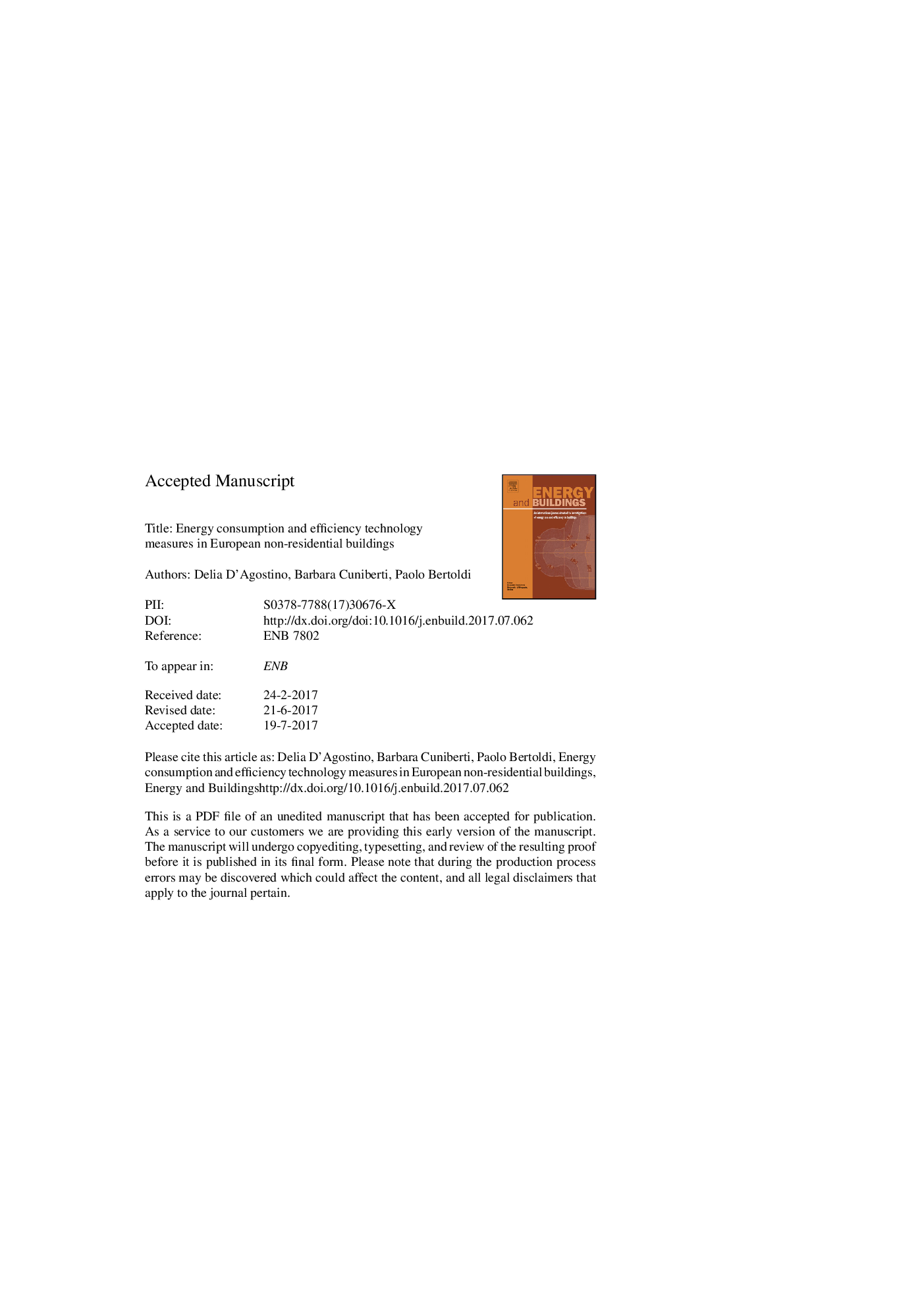| Article ID | Journal | Published Year | Pages | File Type |
|---|---|---|---|---|
| 4918972 | Energy and Buildings | 2017 | 41 Pages |
Abstract
Reducing energy consumption in buildings and increasing renewable production are key goals of European policies to achieve a sustainable and competitive low-carbon economy by 2020 and beyond. Non-residential buildings constitute a heterogeneity sector characterized by high energy consumption and various building types, sizes and energy characteristics over Europe. This paper presents the overall results of the data collected by the GreenBuilding Programme (GBP), launched in 2006 to promote and improve energy efficiency in new and existing European non-residential buildings. The GPB involved building owners willing to adopt energy efficiency measures to decrease energy consumption of their buildings by of at least 25%. Based on voluntary participation, hundreds of partners joined the project, which collected data from more than a thousand buildings of different age, size, use and type (such as offices, hotels, and industry). This paper provides an overview of the Programme and its main results up to its completion in 2014. The paper focuses on building characteristics, energy performance, efficiency measures and energy savings, which are globally estimated to be around 985 GWh/year. A more detailed focus is then given to office buildings, which represent the most frequent building category in the Programme. Case studies are presented to show best practices in various countries with consolidated energy efficiency policy strategies. The paper categorises the main technological measures related to envelope, appliances and systems. It shows how a wide range of technologies are becoming an integral part of buildings and how technology plays a major role in exploiting the massive potential benefits of reducing building energy consumptions. The analysis of the results generates a reliable snapshot of European non-residential building stock.
Keywords
Related Topics
Physical Sciences and Engineering
Energy
Renewable Energy, Sustainability and the Environment
Authors
Delia D'Agostino, Barbara Cuniberti, Paolo Bertoldi,
